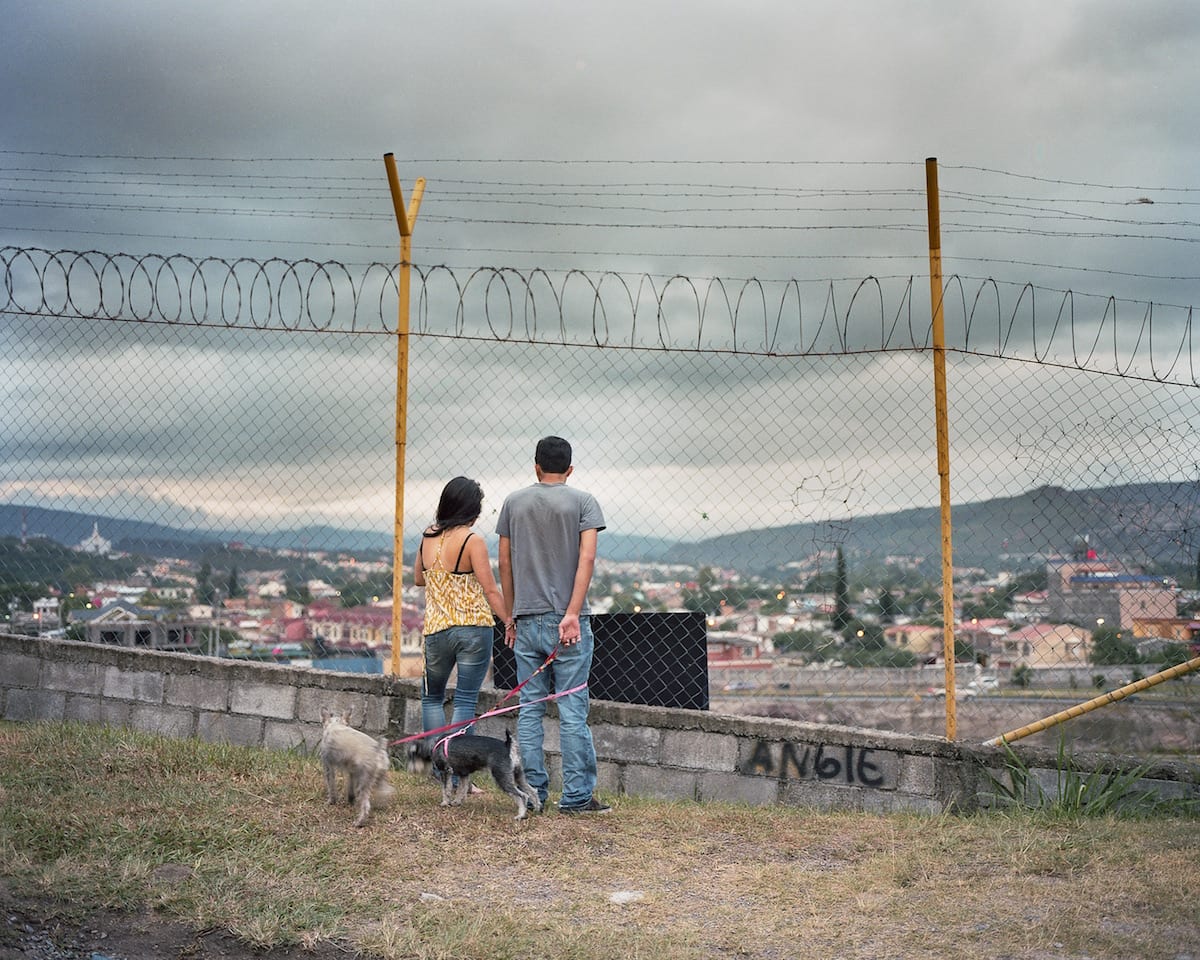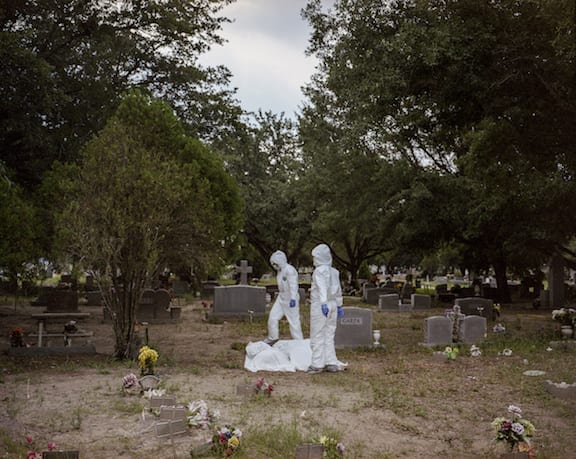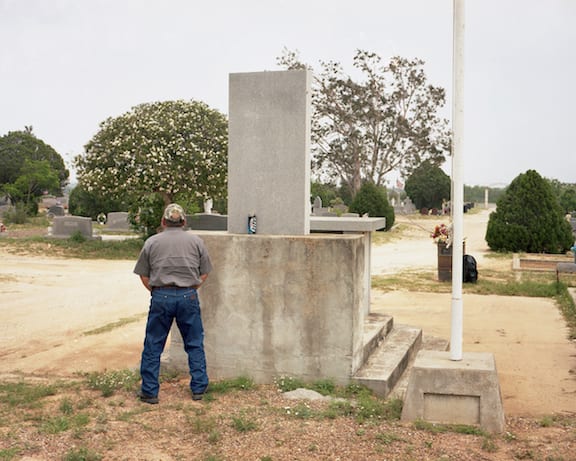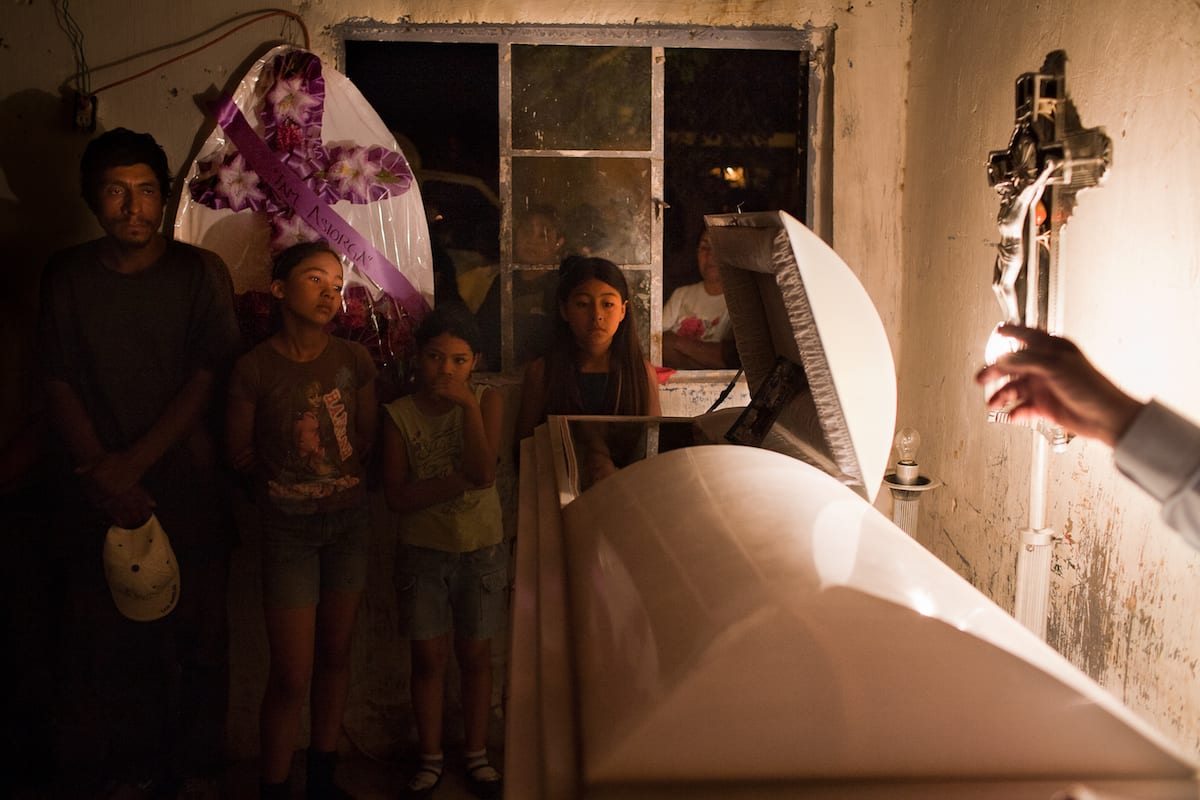“I prefer to hanging out with people for long periods of time, until I care about them and they care about me,” says Bracco. “Unless [the work] is a ‘collaboration’, it doesn’t feel comfortable.”
There is a rhythm and narrative to ‘The Backs of Men’, the series that won him the Visionary award, passing through landscapes and images of daily family life, eventually culminating into a crescendo of the cries of despair for the lives lost.
In one photograph, a stream of burning red blood, still wet, flows down a road before collecting in the gutter among fallen leaves. It’s the fresh blood from the bodies of two brothers and their friend in San Pedro Sula, Honduras.

“You become hyper alert and paranoid,” says Bracco. “But to survive in this space, you have to normalise what is happening. It’s like your biological response to this tragedy. To me, it’s the most terrifying aspect of it.”
A pregnant woman and her boyfriend, seemingly sleeping in a car, are basked in a dim glow from a lamp outside the window. But the subtle crimson ribbon of blood leaking from her ear signifies that this car seat is their final place of rest.

Yet, just as he felt compassion towards the drug-addicted lovers, the fierce spirit of the people living in desperation captivates him. War and conflict, he says, have the ability to bring out two entirely contrasting sides of raw humanity, side by side.
“You see violence like you could never imagine,” says Bracco. “At the same time, you find the kindest people in the world, who go out of your way to help you and make you feel welcome.”

Whilst on assignment in 2008, Bracco met a Honduran woman on the south Texan border who had trekked across the desert to escape, but had stumbled straight into the hands of border patrol. To this day, the photographer feels an overwhelming sense of guilt at not being able to help her.
This encounter triggered the start of the second chapter to Bracco’s work; an insight into the social unrest in the killing fields of Honduras, passing through various cities including San Pedro Sula and Tegucigalpa.
Bracco explains that although his work consistently addresses the way in which young people deal with issues of civil conflict and migration in Central America, it is important that the photography illustrating each place retains a unique aesthetic.

“It’s always important for me that every project looks distinct,” he says. “I’m interested in pictures that tell a story but can also be interpreted in different ways by different people.”
The trilogy concludes in his home in South Texas. Bracco incorporates Polaroid images of his family, some starkly over-exposed, with personalised captions describing every-day life.
“It was a way to acknowledge that we are also part of the population that exists in this space,” Bracco says. “That all the things are happening but we continue our daily lives as if they weren’t.”
The light and serenity in these images bring a balance to the series. Indeed, despite always striving to take honest and intimate pictures, Bracco worries his stories could be used to fuel the negative attitude towards Central American refugees. The very attitudes, he says, he is actively trying to counteract.

